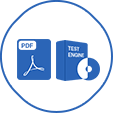TheCorporate Sustainability Reporting Directive (CSRD)replaced theNon-Financial Reporting Directive (NFRD)to address itslimitationsin scope and reporting requirements. Below are the explanations for each option:
A. False– The NFRDdid notrequire all companies in the EU to include a non-financial statement. Instead, itapplied only to large public-interest entitieswith 500 or more employees.
B. True– The NFRD applied tolarge public-interest entities, includinglisted companies, banks, and insurance firms with more than 500 employees.
C. False– The NFRDdid not mandate external assurancefor sustainability information. TheCSRD introduced mandatory assuranceat the EU level.
D. False– The CSRDdid not replace the NFRD; rather, itexpanded and strengthened reporting requirements. TheNFRD was replaced by the CSRD, but not the other way around.
E. True– TheCSRD was introduced to improve the scope and depth of sustainability reportingcompared to the NFRD. Itexpanded the number of entities required to report, standardized disclosures via ESRS, and introduced third-party assurance requirements.
Key Differences Between CSRD and NFRDFeature
NFRD (Old Directive)
CSRD (New Directive)
Scope
Large public-interest entities (500+ employees)
All large companies + listed SMEs
Assurance
Not required
Mandatory external assurance
Disclosure Requirements
Limited sustainability disclosures
Comprehensive ESRS-based reporting
Reporting Standards
No standardized framework
ESRS-based mandatory framework
Application Date
In force since 2018
Applies from 2024 onwards
CSRD Directive (EU) 2022/2464– Assurance & Reporting Provisions.
ESRS Compilation Explanations January - November 2024.
Official References:








